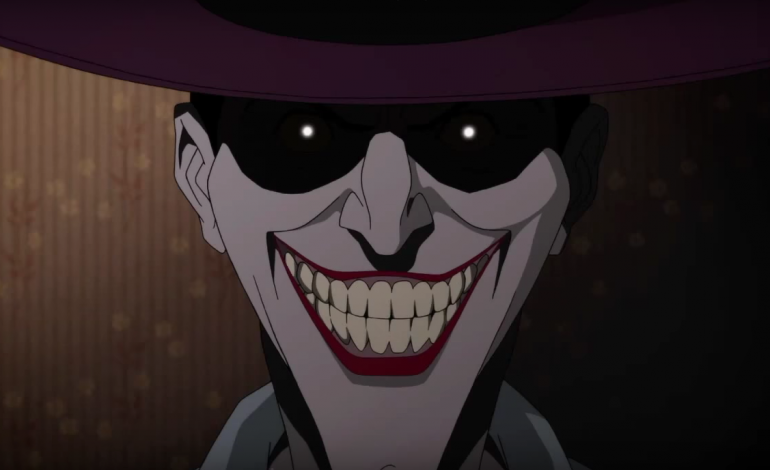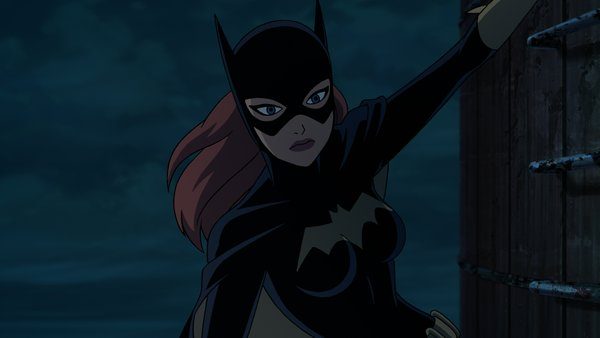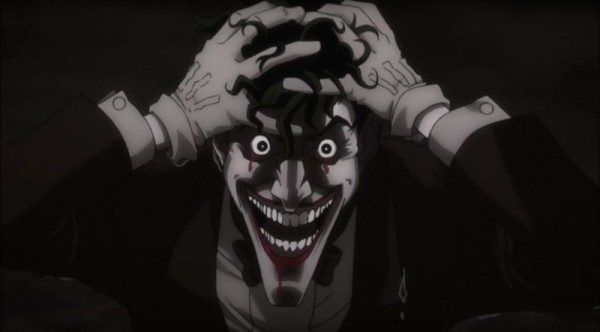

Adaptations are funny things. How do you decide what elements of the original work need to be removed? How do you decide what to keep in, what to expand upon, what to deemphasize, and what completely new elements need to be added in so the original work fits more snuggly into your medium? Adaptations of comic books are even funnier. Mainly because there are plenty of films that adapt comic book characters, but relatively few which adapt comic book stories. Oh sure, The Dark Knight might borrow the “I believe in Harvey Dent” slogan from Batman: The Long Halloween, or Batman v. Superman might blend some imagery and iconography from The Dark Knight Returns and The Death of Superman, but transcribing a story about masked heroes beat for beat from the pages on which they originated seems to be a no-no in Hollywood. In fact the odd comics that do get the more straight adaptations (the kinds you would expect for say a novel, of the non-graphic variety) tend not to be traditional superhero stories. Instead, the filmmakers go for comics that deconstruct men in capes (i.e. Watchmen), or fall into completely different genres (i.e. Road to Perdition, 300, Scott Pilgrim). Unless of course, you count animated features (and many don’t) which tend not to get any type of theatrical release; then you’ve got film versions of critically acclaimed titles like All-Star Superman, Justice League: The New Frontier, and today’s subject Batman: The Killing Joke.
The latest in Warner Bros. Animation’s long line of titles under the DC Universe Animated Original Movies banner, Killing Joke brings together several long time players of the cartoon superhero game for what is, for the most part, an exceptionally faithful adaptation of one of the best Batman stories ever. But the “for the most part” is something worth talking about. See, the original Killing Joke comic isn’t very long – only a single issue less than 50 pages – so of course there were going to be additions to stretch out the film to a 75 minute runtime. The problem is these additions don’t exactly blend seamlessly into the preexisting storyline. They basically amount to a prologue focusing on Barbara Gordon, aka Batgirl – who plays a small but significant part in the regular part of the story – and her…uh…complex relationship with Batman. Look, there’s no avoiding this, the film does some, let’s just say creative things with the Batman/Batgirl dynamic, and it doesn’t really work. I’m not going to say it’s a betrayal of the integrity of the characters of, or some such nonsense, but once we get into the second part of the film – the part taken directly from the Killing Joke – this prologue feels inconsequential. Nothing it establishes or builds up pays off in the slightest. It feels more like the start of a completely different movie. Mind you, it probably wouldn’t be a bad film, as the writing and direction of the first part is pretty stellar, but just one baring no relation to the main event.
But what a main event it was. Any negative feelings I might have had about the opening (and really, I didn’t have many) were pretty much forgotten once the real story kicked into gear and the stage was set for the oft repeated but simply timeless battle between Batman and the Joker. The dialogue of author Alan Moore (The League of Extraordinary Gentlemen, From Hell, Watchmen) is more (no pun intended) or less transplanted right from the comic book pages by screenwriter Brian Azzarello. This was definitely the right call, as Moore’s writing aptly creates a platform upon which characters can discuss and debate who and what they are without sounding trite and overly philosophical. The animation itself is no slouch either, aptly recreating some of Brian Bolland’s best panels – including the now iconic scene of the Joker emerging from his tainted baptism.
Of course none of the words or pictures would be nearly as effective if they didn’t have the right voices bringing them to life. Kevin Conroy and Mark Hamill have been voicing Batman and the Joker respectively on and off for nearly 25 years, and could probably do it in their sleep by now. There’s something incredibly natural about Conroy’s Batman voice – at times soothing, commanding, threatening, or some combination of the three – that convinces you whenever the character puts on the mask he’s not playing at Batman he simply is. But its Hamill who really gets to shine, with his manic posh version of the Joker being allowed to sing and dance, spout delightfully nihilistic observe rations about life, and even garner some sympathy as we dive into the character’s (possible) backstory. I would also be remiss if I didn’t mention Tara Strong’s spot-on Batgirl. If you only know Strong’s name from kids’ shows like Powerpuff Girls and My Little Pony, you owe it to yourself to listen to her taking on this much darker role.
Verdict: 4 out of 5
Despite a noticeably tacked on prologue, Batman: The Killing Joke is an excellent adaption of one of the finer examples of superhero comics. And if it really doesn’t matter to you where your entertainment originates from, just stick around for some of the best versions of Batman and the Joker ever put to screen.



